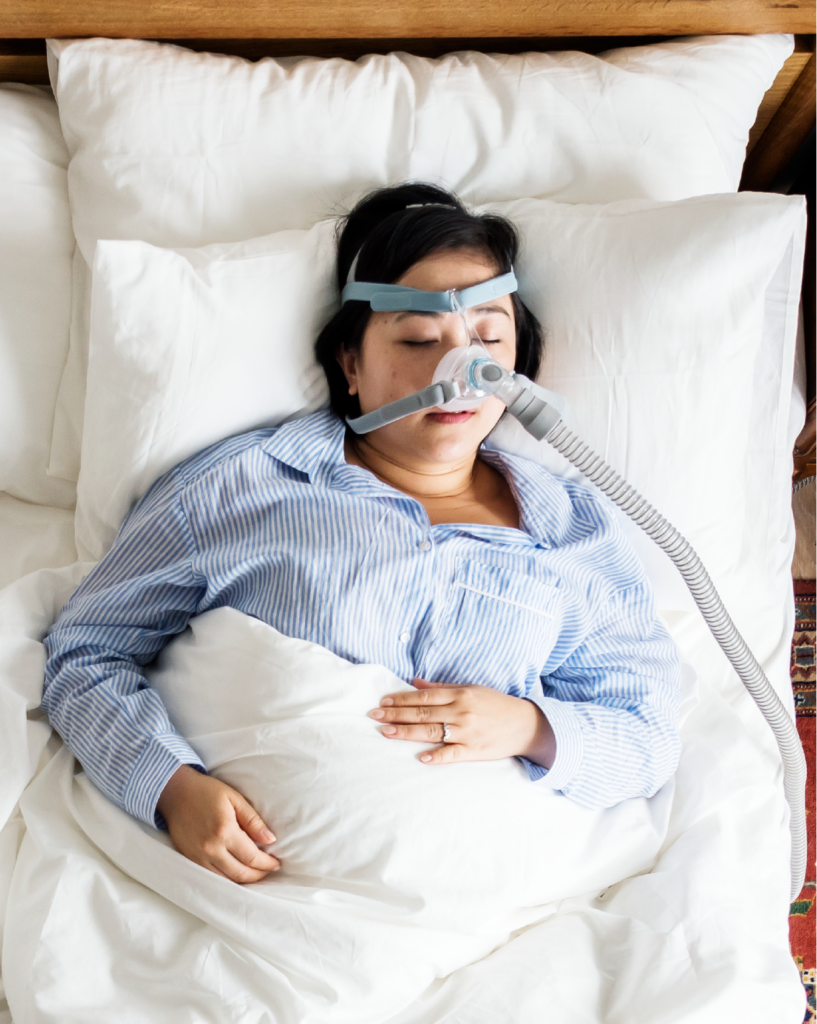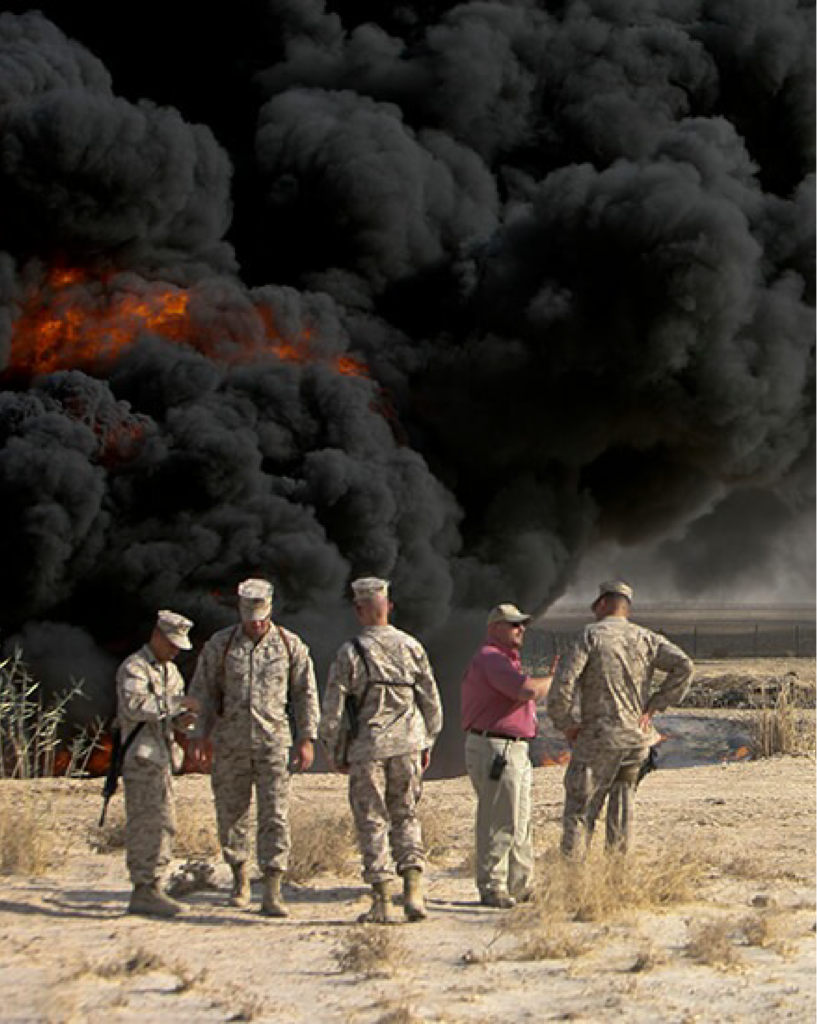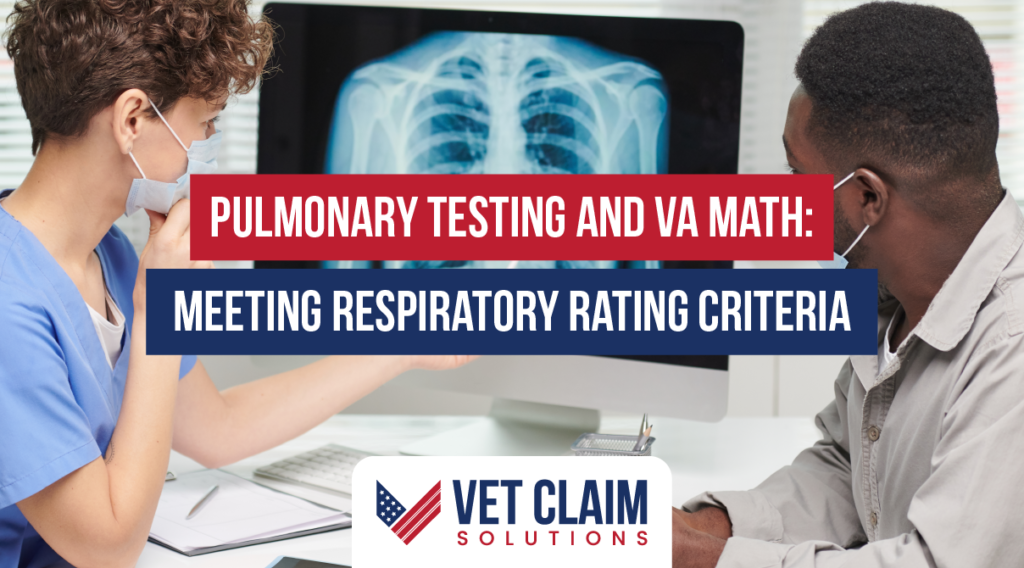Picture this: you’ve spent years serving your country, breathing in the thick dust of far-off lands or the acrid smoke from military burn pits. Now back home, each breath feels like a battle due to pulmonary fibrosis—a relentless scarring of your lungs. For veterans grappling with this respiratory condition, knowing how to qualify for a VA disability rating for pulmonary fibrosis can be as vital as air itself.
The journey’s tough, but here’s where it starts turning around. You’re about to get clued up on nailing down that all-important service connection and getting the compensation you deserve.
Catch your breath and take heart; we’re diving deep into what makes or breaks a claim—think military exposures like Agent Orange, crucial function tests during C&P exams, and leveraging law tools if things go sideways. Ready? Let’s dive in.
Establishing Service Connection for Pulmonary Fibrosis

If you’re a veteran struggling with pulmonary fibrosis, knowing the ins and outs of VA disability claims is like having a secret weapon. This condition can be stealthy as smoke but hit your health harder than a freight train.
Direct Service Connection and Pulmonary Fibrosis
The road to getting VA benefits starts with linking your pulmonary fibrosis directly to your military service. Think about it this way: If military burn pit locations were part of your old stomping grounds or if Agent Orange was more than just an ominous cloud on the horizon during your time in uniform, then there’s groundwork for direct service connection. Exposure to these environmental hazards has left many veterans coughing up more than just bad memories.

To paint a clear picture for the VA, gather every shred of evidence that shows how those toxic playgrounds are behind your respiratory woes. And let’s not forget, if lung scarring from fibrosis sends you gasping after climbing stairs like you’ve sprinted up Mount Everest—that’s proof positive that we’re talking about something serious here.
Secondary Conditions Linked to Pulmonary Fibrosis
Sometimes life throws curveballs—and so does pulmonary fibrosis by spawning secondary conditions faster than gremlins hitting water. These tag-along issues might include breathing problems tougher than solving Rubik’s Cube blindfolded or excessive mucus production leaving you feeling like an out-of-luck slime wrestler.
Breathing should be as easy as falling off a log, right? But when it feels like breathing through a straw thanks to scarred lungs from fibrotic changes—it opens doors (unfortunately) for additional complications such as other respiratory illnesses. Now imagine tying all these threads together into one cohesive story; that’s what needs telling when arguing secondary connections linked back to good ol’ Uncle Sam’s hazardous environments.
Key Takeaway:
Got pulmonary fibrosis? Link it to your military service and you’re on track for VA benefits. Burn pits or Agent Orange exposure could be key players in this fight. Show the VA how toxic exposures during service are choking up your health today.
And if fibrosis has got you spawning secondary conditions like a horror movie monster, remember: those complications can strengthen your claim. It’s all about connecting the dots back to Uncle Sam’s hazardous hangouts.
Navigating VA Disability Ratings for Pulmonary Conditions

When it comes to understanding VA disability ratings, especially for something as complex as pulmonary conditions, you might feel like you’re trying to solve a Rubik’s Cube blindfolded. But fear not. We’re here to guide you through the labyrinth of lung disease and help make sure your rating reflects your condition accurately.
Understanding the VA’s Rating Criteria
Pulmonary function tests are kind of like the SATs for your lungs—they measure how well they perform under pressure. The VA uses these test results to assign a disability rating that can range from 10%—for those just starting to notice their breath hitching—to a full 100%, reserved for severe cases where taking a deep breath feels like running a marathon. What’s this based on? It’s all about numbers, specifically the FEV1/FVC ratio that reveals how much air you can forcibly exhale.
To give an idea: imagine blowing up balloons at a kid’s birthday party. If filling one balloon takes everything out of you—that would likely score higher than if pumping up several is no big deal.

The lowest rung on this respiratory ladder is when breathing troubles don’t quite stop life in its tracks but definitely make climbing stairs more dramatic than an action movie finale (that’s around 10%). On the flip side, if simple tasks leave you gasping—as though each breath were gold coins—you could be looking at top-tier compensation (we’re talking about that golden 100%). These aren’t just arbitrary figures; they’re anchored in hard data obtained through spirometry tests and other medical assessments aimed at gauging your pulmonary function—or lack thereof.
The Comprehensive C&P Exam Process for Respiratory Conditions

You’ve got mail. And by mail, we mean notices—for C&P exams which stand tall between veterans and their deserved benefits. Now let me paint you a picture: You walk into the exam room expecting some guy with cold hands—but instead find yourself amidst machines ready to measure every huff and puff—FEV-1 scores await.
But wait there’s more. They’ll also look into FVC or Forced Vital Capacity—if this was swimming we’d say think Olympic pool versus backyard inflatable—and DLCO(SB), diffusing capacity…think sponge efficiency absorbing spilled milk (or oxygen).

If those acronyms made less sense than alphabet soup—the bottom line is these measurements tell doctors whether your lungs have enough oomph left in them after military service gave them quite possibly too much adventure time (and not necessarily fun ones).
To gauge endurance levels, similar to checking a battery’s remaining charge, we assess lung function and capacity. This can help determine how well you’re breathing and if any treatment or lifestyle changes might be needed.
Key Takeaway:
Think of VA disability ratings for pulmonary issues as a breath test—your lung’s performance can land you anywhere from 10% to 100%. The more air you force out, the higher your rating. C&P exams are where this all goes down, with machines sizing up every inhale and exhale to pin down your lungs’ fighting shape after service.
The Comprehensive C&P Exam Process for Respiratory Conditions
When it comes to the Compensation and Pension (C&P) exam, think of it as your moment in the spotlight. This is where you show how your respiratory condition, like pulmonary fibrosis, plays out on a day-to-day basis. It’s not just any medical review – this one packs a punch because it can directly affect your VA disability rating.
Key Measurements Used in C&P Exams
You may have heard that figures don’t lie. Well, during a C&P exam for respiratory conditions such as pulmonary fibrosis, certain figures become VIPs – very important points. Let’s break down these big players: FEV-1 or Forced Expiratory Volume in one second measures how much air you can push out quickly—think of blowing up balloons at record speed. Next up is FVC or Forced Vital Capacity which tells us the grand total volume of air you can exhale after taking the deepest breath possible—it’s like seeing how much gas your lung tank holds.
Diving deeper into stats we meet DLCO (SB), Diffusing capacity of Lung for Carbon Monoxide (Single Breath). Now this might sound more complex than choosing from 31 flavors but stay with me here—it essentially sizes up how well oxygen gets through your lungs’ border control into the bloodstream when you’re playing host to carbon monoxide instead of oxygen—yep, they do swap places sometimes. And then there’s exercise testing—a gym session monitored by professionals measuring what happens when you give those lungs a workout minus spandex and sweatbands.
All these tests help stitch together an intricate tapestry reflecting just what kind of toll military service has taken on our veterans’ breathing apparatuses. In fact veterans law resources highlight that understanding these test results are crucial since they guide experts through thickets filled with diagnostic codes leading them towards fair ratings tailored individually.
We’ve seen cases swing based on function tests where low scores meant higher ratings due to decreased lung power—and let’s be real who wouldn’t want their efforts recognized properly? Just remember every percentage point counts towards maximizing benefits so breathe easy knowing each deep breath contributes toward getting what rightfully belongs under Uncle Sam’s generous wingspan.
To put things into perspective consider that even mild impairment starting at only 10% could bump someone onto benefit radar while extreme cases land squarely at 100%. That means full support wrapping around folks whose lives revolve around portable O2 tanks or those simply trying hard catching wind after climbing stairs without turning blue-ish—which honestly sounds less fun than being short-changed during happy hour.
Key Takeaway:
The C&P exam is your chance to show the real impact of pulmonary fibrosis on your life. Numbers are key: FEV-1, FVC, and DLCO (SB) tests tell how well you breathe and can make or break your VA rating. Even mild lung impairment might get you benefits, so take a deep breath and let these exams speak for you.
Exploring Common Secondary Conditions Associated with Pulmonary Fibrosis
Veterans grappling with pulmonary fibrosis often find themselves in a relentless tug-of-war, not just against this lung-scarring heavyweight but also its tag-team partners – the secondary conditions. It’s like walking into an ambush where breathing issues lay in wait to complicate matters.
Secondary Conditions Linked to Pulmonary Fibrosis

Fibrotic tissue doesn’t play fair; it hardens and thickens your lungs until every breath feels like you’re trying to suck air through a straw. But there’s more—fibrosis can open floodgates for additional respiratory complications. Think of your lungs as a sponge—if they’re stiff and scarred, they can’t soak up enough oxygen or expel carbon dioxide effectively, leading other parts of the body to suffer.
Breathing should be as easy as falling off a log, right? Not so much when excessive mucus joins the fray thanks to chronic bronchitis or infections that piggyback on weakened lung defenses. And let’s not forget about heart problems—they’re lurking around too because if your ticker isn’t getting all the oxygen-rich blood it needs due to poor lung function… well, things can go south pretty quickly.

We see veterans battling side effects such as fatigue from sleep apnea—a disorder where you stop breathing momentarily while asleep—and it hits them harder than morning revelry at boot camp. Imagine being jolted awake night after night; no wonder many vets are marching through their days exhausted.

Military burn pit exposure, something far too common among our brave service members who served overseas is another beastly culprit that makes these secondary conditions feel like adding insult to injury. Lung scarring might have started during those deployments without anyone knowing until years later when symptoms show up uninvited at life’s party.

Now take Agent Orange locations, notorious for their association with respiratory cancers—it’s almost certain that where there was Agent Orange, trouble followed close behind.
So what does this mean for VA disability ratings? When we talk about pulmonary fibrosis linked directly or indirectly (secondary) due to military service—the odds stack higher against veterans’ favor in terms of health challenges.
To get ahead of this sneaky adversary known as secondary conditions associated with respiratory illnesses one must pass muster by showing how each condition connects back directly—or secondarily—to military service.
And remember folks: If Uncle Sam agrees that these nasty followers came knocking because of primary combat-related duties—you could see an uptick in your overall VA rating faster than you can say “ten-hut.”
The law tools available provide some relief by allowing vets to access resources they need for better care of animals.
Key Takeaway:
Veterans with pulmonary fibrosis often face additional health battles, like heart issues and sleep apnea, which can worsen their condition. Exposures to military burn pits or Agent Orange may also add to their troubles. To boost a VA disability rating, it’s crucial for vets to show these conditions are linked to their service.
FAQs in Relation to Qualifying for a Va Disability Rating for Pulmonary Fibrosis
1. How do you get disability for pulmonary fibrosis?
To snag a VA disability rating for pulmonary fibrosis, show it’s linked to your service—either directly or as a secondary condition.
2. How does the VA do a pulmonary function test for disability?
The VA measures lung huff and puff with tests like FEV1/FVC to figure out how severe your breathing hitch is.
3. What benefits can you get for pulmonary fibrosis?
You might pocket monthly cash based on your rating, healthcare, and sometimes extra dough if it’s wicked bad.
4. What is the VA disability rating for chronic lung disease?
Ratings range from 10% to 100%, pinned down by how much your lungs are holding back your day-to-day life.
Conclusion
Know this: Qualifying for a VA Disability Rating for Pulmonary Fibrosis isn’t just about paperwork; it’s about your story, your service, and your health. Remember this: Service connection is key. Understand that evidence linking pulmonary fibrosis to military exposure could tip the scales in your favor.
Keep in mind: Compensation levels are tied to disability ratings—every percentage point matters. Trust that function tests like spirometry play a big role in those numbers. Consider using online tools—they’re there to give you a heads-up on potential benefits.
Bear in mind: If at first you don’t succeed with your claim, appeal options exist. Use them wisely. Know where you stand legally; expert help can make all the difference when navigating veterans law complexities.
Take these points home and let them guide you through each step of securing what’s rightfully yours—a fair shake from the VA system after giving so much of yourself to serve our nation.


